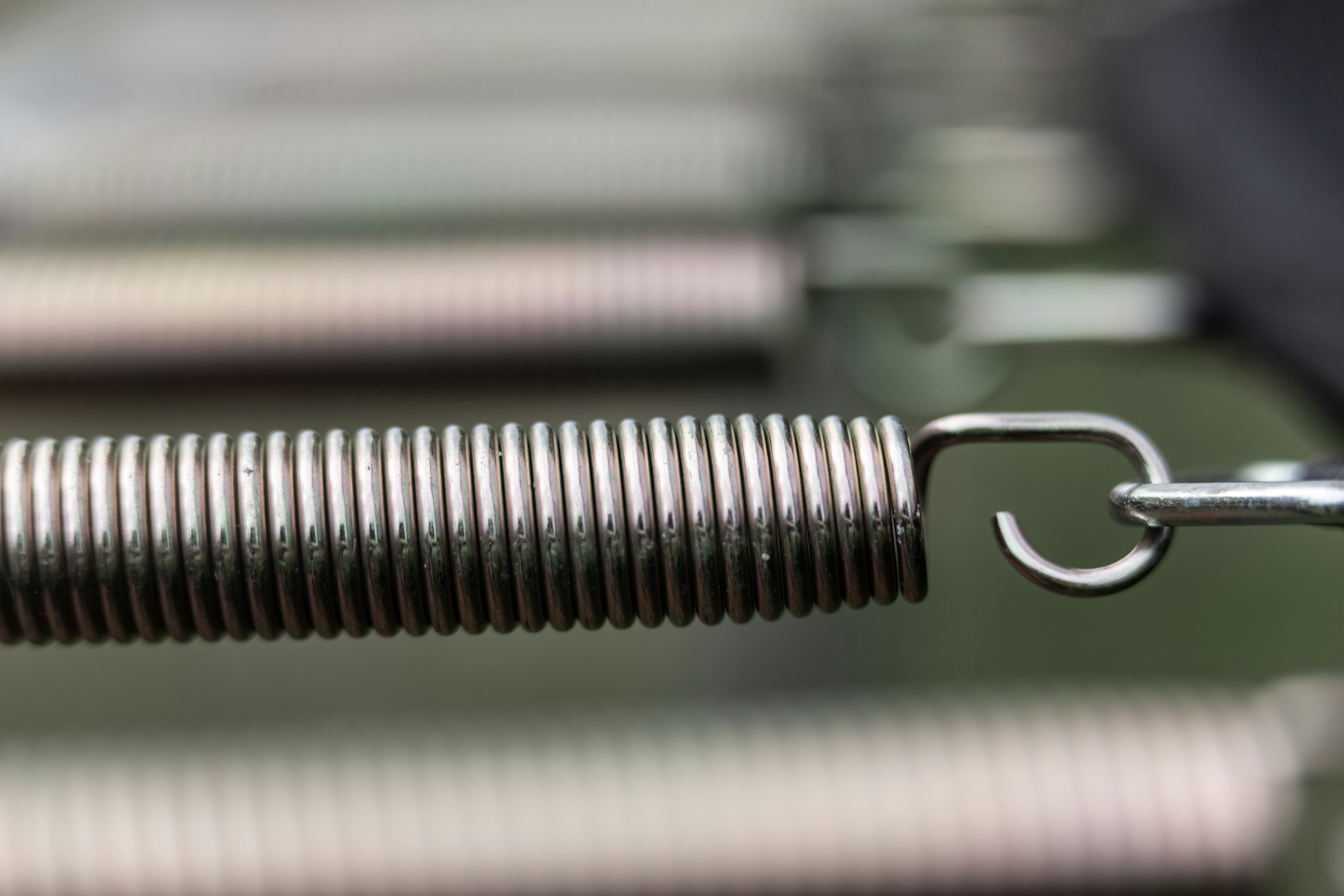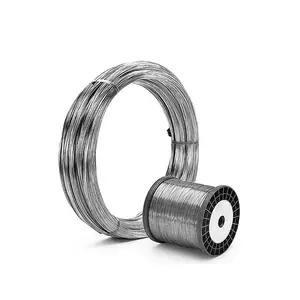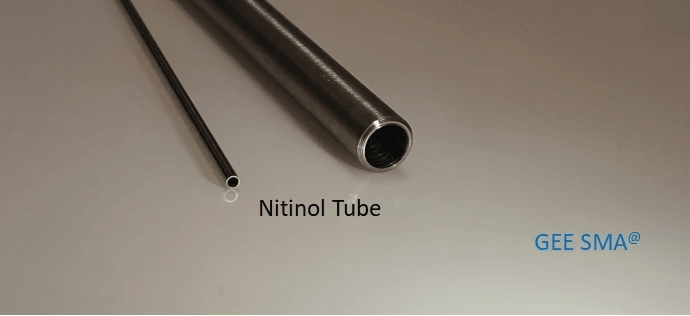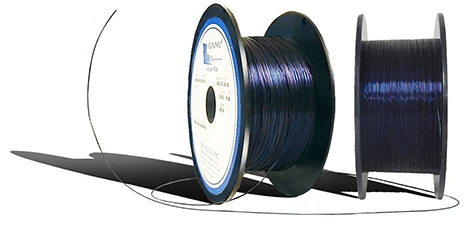Introduction

In the world of advanced materials, few can rival the unique properties and capabilities of Nitinol. This remarkable alloy, known for its shape memory and superelastic characteristics, has garnered attention across multiple industries. From robotics to medical devices, Nitinol wire is transforming how we think about motion and actuation.
Understanding Nitinol and its Magic
Nitinol, a nickel-titanium alloy, is often referred to as magic metal due to its ability to return to a predetermined shape when heated. This property makes it an ideal candidate for various applications, particularly in creating Nitinol linear actuator wire. By leveraging its unique capabilities, engineers can design innovative systems that respond dynamically to their environments.
The magic of Nitinol extends beyond just its shape memory; it also exhibits superelasticity at certain temperatures, allowing it to undergo significant deformation without permanent change. These characteristics are crucial for the development of effective Nitinol actuators that can perform reliably under stress. As we explore this fascinating material further, it becomes clear why Nitinol is at the forefront of modern engineering solutions.
Applications of Nitinol Wire in Various Fields
Nitinol wire has found applications in numerous fields due to its versatility and reliability. In the medical sector, for instance, it's commonly used in stents and guidewires—devices that require precise movement and flexibility while maintaining strength. Similarly, in robotics, Nitinol Muscle Wire serves as an efficient actuator option that mimics natural muscle movements with remarkable precision.
The aerospace industry also benefits from Nitinol's unique properties; components made from this alloy can withstand extreme conditions while providing lightweight solutions for various applications. As industries continue to innovate with this remarkable material, the possibilities seem endless—from automotive engineering to consumer electronics—Nitinol wire is paving new paths for technological advancement.
The Future of Nitinol Actuators
Looking ahead, the future of Nitinol actuators appears bright as researchers explore innovative designs and applications for this extraordinary material. With advancements in Nitinol actuator design techniques and improved manufacturing processes like GEE SMA technology, we are likely to see even more efficient actuators emerge on the market soon.
Moreover, as demand grows across sectors such as robotics and healthcare for compact yet powerful actuation solutions, the role of Nitinol memory wire will only become more significant in developing cutting-edge technologies that enhance our everyday lives. The potential impact on future designs could revolutionize how machines interact with their environment by utilizing smart materials like Nitinol effectively.
What is Nitinol?

Nitinol, a fascinating alloy of nickel and titanium, stands out in the world of materials science due to its unique properties and versatile applications. This remarkable metal exhibits two primary phases: austenite and martensite, which allow it to change shape in response to temperature variations. As we delve deeper into Nitinol's composition and characteristics, we uncover how this material has revolutionized the concept of actuation through its use in Nitinol linear actuator wire.
The Basics of Nitinol Composition
Nitinol is primarily composed of nickel (about 55%) and titanium (about 45%), forming an intermetallic compound that boasts both strength and flexibility. This specific ratio gives Nitinol its distinctive properties, enabling it to undergo phase transformations that are essential for its functionality as a Nitinol actuator. The combination of these two metals results in an alloy that not only resists corrosion but also demonstrates excellent fatigue resistance, making it ideal for various applications, including robotics and medical devices.
Unique Properties of Nitinol Wire
One of the most captivating features of Nitinol wire is its shape memory effect; when deformed at lower temperatures, it can return to its original shape upon heating. This property makes Nitinol muscle wire particularly valuable for applications requiring precise movements or actuation without complex mechanical systems. Additionally, the superelasticity exhibited by Nitinol allows it to absorb significant amounts of stress without permanent deformation, further enhancing its appeal as a reliable material for innovative designs in the field of engineering.
How Nitinol Acts as a Linear Actuator
Nitinol acts as a linear actuator through its ability to convert thermal energy into mechanical work via phase transformation. When heated above a certain temperature threshold, the wire contracts significantly—an action that can be harnessed for various applications such as lifting or moving components in machinery or robotics. By integrating this remarkable characteristic into their designs, engineers can create compact systems that rely on minimal power input while achieving impressive performance levels with their Nitinol actuator design.
Nitinol Linear Actuator Wire Explained

Nitinol linear actuator wire is a fascinating innovation that leverages the unique properties of Nitinol, a nickel-titanium alloy, to create movement through thermal activation. This mechanism allows for precise control and responsiveness, making it an ideal choice for various applications. Understanding how this Nitinol actuator works can illuminate why it is becoming a staple in both robotics and medical devices.
The Mechanism of Nitinol Actuation
The actuation mechanism of Nitinol wire relies on its ability to undergo phase transformations between two distinct states: martensite and austenite. When heated above its transformation temperature, the wire shifts from the flexible martensite phase to the more rigid austenite phase, resulting in a dramatic change in length that can be harnessed for movement. This property allows Nitinol muscle wire to contract or expand as needed, effectively functioning as an actuator without any complex motors or gears.
To control this process, electrical resistance heating is often employed; when current flows through the Nitinol wire, it heats up and activates the desired motion. Conversely, when cooled down, it returns to its original shape in the martensitic state. This simple yet effective mechanism makes Nitinol actuators incredibly efficient while minimizing maintenance needs compared to traditional actuators.
Advantages of Nitinol Over Conventional Actuators
One of the most significant advantages of using Nitinol linear actuator wire is its compact size and lightweight nature compared to conventional actuators like electric motors or hydraulic systems. This miniaturization opens up new possibilities for design flexibility in various applications where space is at a premium. Additionally, because these actuators do not rely on external power sources during their resting state, they consume less energy overall—an attractive feature for energy-conscious designs.
Another advantage lies in their inherent safety; since they operate at lower voltages and currents than many traditional systems, there's less risk of overheating or causing injury during operation. Furthermore, their robust construction means they can withstand harsh environments better than typical mechanical devices which may wear out over time due to friction or other forms of stress. Thus, incorporating Nitinol actuator design into projects can lead to longer-lasting solutions with reduced operational costs.
Applications in Robotics and Medical Devices
Nitinol muscle wire has found numerous applications across robotics and medical devices due to its unique properties and reliable performance under varying conditions. In robotics specifically, these actuators enable more lifelike movements by mimicking natural muscle contractions—an essential feature for humanoid robots or prosthetics designed for enhanced mobility and dexterity. With advancements in technology allowing for real-time control of these wires via sensors and feedback mechanisms, robotic systems are becoming increasingly sophisticated.
In medical devices such as stents or surgical tools, Nitinol's biocompatibility makes it an excellent choice; it can be introduced into the body without causing adverse reactions while still providing necessary functionality—like expanding within blood vessels when heated by body temperature. Moreover, innovations like Nitinol memory wire allow these devices not only to perform mechanical tasks but also adapt dynamically based on patient needs or environmental changes within the body itself.
Nitinol Actuator Design Considerations

Designing a Nitinol actuator involves a careful balance of material properties, application requirements, and system integration. The unique characteristics of Nitinol wire, such as its shape memory effect and superelasticity, make it an attractive choice for various applications. However, these same properties necessitate specific design considerations to ensure optimal performance and reliability in real-world scenarios.
Key Design Factors for Nitinol Actuators
When embarking on the journey of Nitinol actuator design, several key factors must be taken into account. First and foremost is the selection of the appropriate type of Nitinol wire; the choice between Nitinol linear actuator wire and other forms can significantly impact functionality. Additionally, designers should consider the operating temperature range since this influences the transition temperatures that dictate when the wire will activate or return to its original shape.
Another crucial aspect is the load conditions that the actuator will encounter in its intended application. Understanding how much force is required for actuation helps in determining not only the diameter of the Nitinol wire but also its length and configuration within a system. Lastly, thermal management must be addressed since excessive heat can lead to premature fatigue or failure of the Nitinol muscle wire over time.
Integration of Nitinol Muscle Wire in Systems
Integrating Nitinol muscle wire into existing systems poses both opportunities and challenges for engineers and designers alike. One significant advantage is that these actuators can be compactly designed due to their high power-to-weight ratio, which allows for lighter systems without sacrificing performance. This feature makes them particularly appealing for applications like robotics where space is at a premium.
However, successful integration requires careful planning regarding how heat generated during operation will affect surrounding components. Effective thermal insulation or cooling mechanisms may need to be implemented to prevent damage or inefficiency in adjacent parts of machinery or devices using Nitinol actuators. Moreover, control systems must be designed with precision to handle the unique response characteristics exhibited by Nitinol memory wire during actuation cycles.
Case Studies: Successful Nitinol Implementations
There are numerous success stories showcasing how well-designed Nitinol actuators have made significant impacts across various industries. For instance, in medical devices such as stents and surgical tools, engineers have utilized nitinol linear actuator wires due to their biocompatibility and ability to perform complex movements with minimal power consumption. These applications highlight not only efficiency but also patient safety through reduced invasiveness during procedures.
In robotics, companies have employed innovative designs featuring multiple strands of Nitinol muscle wire working together synergistically to achieve intricate motions that mimic natural movement patterns found in living organisms. Such implementations underscore how effective design considerations can harness the unique properties of this remarkable material for groundbreaking advancements in technology.
As we look toward future innovations within this field, it's clear that thoughtful design around these key factors will continue shaping how we utilize nitinol actuators across diverse sectors.
Industrial Use Cases for Nitinol

Nitinol is making waves across various industries, showcasing its versatility and innovative potential. From aerospace technology to manufacturing processes, the unique properties of Nitinol wire are being harnessed for a range of applications. Let's dive into how this remarkable material is transforming industrial solutions.
Nitinol in Aerospace Technology
In the aerospace sector, Nitinol linear actuator wire is proving to be a game-changer. Its lightweight yet strong characteristics make it ideal for use in aircraft components that require precise movement and reliability under extreme conditions. Engineers are integrating Nitinol actuators into systems like wing flaps and landing gear mechanisms, where traditional materials simply can't compete.
The ability of Nitinol muscle wire to return to its original shape after deformation allows for compact designs that save valuable space and weight in aircraft. This efficiency not only enhances performance but also contributes to fuel savings—a critical factor in aviation economics today. As the industry continues to innovate, we can expect even more applications of Nitinol technology in future aircraft designs.
Nitinol Applications in Manufacturing
Manufacturing is another realm where Nitinol shines brightly, particularly through the use of Nitinol actuator design principles. The material's unique phase transformation properties enable it to function effectively as an actuator in assembly lines and robotic systems. For instance, manufacturers are using nitinol linear actuators for precise positioning tasks that require rapid response times and high reliability.
Moreover, the durability of Nitinol wire means less downtime due to maintenance or replacement—an essential factor when considering production efficiency. With advancements in automation technologies, integrating Nitinol muscle wire into robotic arms has become increasingly common, leading to smarter manufacturing processes that adapt seamlessly to varying tasks.
The Role of GEE SMA in Industrial Solutions
GEE SMA (Shape Memory Alloy) plays a pivotal role in enhancing the applications of nitinol within industrial solutions. By focusing on advanced nitinol actuator designs that leverage GEE SMA's capabilities, industries can achieve unprecedented levels of control and efficiency. This synergy between GEE SMA technology and nitinol memory wire results in actuators that not only perform exceptionally well but also offer long-term reliability.
The adaptability provided by GEE SMA allows engineers to develop custom solutions tailored specifically for diverse industrial needs—from automotive systems requiring precision movements to complex machinery operating under challenging conditions. As industries continue exploring these possibilities, we can anticipate a surge in innovative applications driven by GEE SMA-enhanced nitinol technologies.
The Future of Nitinol Technology

As technology advances, the future of Nitinol promises to be as exciting as it is transformative. With its unique properties, Nitinol wire is poised to revolutionize various industries, especially in applications requiring precision and reliability. Innovations in Nitinol memory wire and actuator designs are paving the way for enhanced functionality and efficiency.
Innovations in Nitinol Memory Wire
Recent advancements in Nitinol memory wire have opened up new possibilities for its application across numerous fields. Researchers are developing smarter versions of this material that can respond more effectively to temperature changes, allowing for greater control and versatility in design. This evolution not only enhances the performance of the Nitinol linear actuator wire but also makes it a prime candidate for complex systems where adaptability is crucial.
Moreover, innovations like improved fatigue resistance and increased recovery forces are making Nitinol muscle wire an even more attractive option for engineers. These enhancements enable the creation of smaller, lighter devices without compromising strength or reliability. As these innovations continue to unfold, we can expect a surge in applications that leverage the unique attributes of Nitinol memory wire.
Predictions for Nitinol in Robotics
The integration of Nitinol actuators into robotics holds tremendous potential for future developments within this field. As robots become increasingly sophisticated, the demand for lightweight yet powerful components grows; enter the world of Nitinol linear actuator wires! With their ability to contract and expand under thermal influence, these actuators can mimic biological movements more closely than traditional motors.
Predictions suggest that by incorporating advanced designs using Nitinol muscle wire, robots will achieve unprecedented levels of agility and responsiveness. This could lead to breakthroughs not only in industrial automation but also in areas like prosthetics and soft robotics where flexibility is key. The marriage between robotics and Nitinol technology may very well redefine how machines interact with their environments.
Emerging Trends and Research
The landscape surrounding research on Nitinol technology is continuously evolving with emerging trends that promise exciting developments ahead. One notable trend is the exploration of hybrid systems that combine conventional materials with innovative uses of nitinol actuator design principles—creating devices with enhanced capabilities beyond what either material could achieve alone.
Additionally, there’s a growing focus on sustainability within the development processes involving nitinol wire; researchers are investigating ways to recycle or repurpose used materials while maintaining performance standards. Such efforts reflect a broader commitment within industries to embrace eco-friendly practices while leveraging cutting-edge technologies like those provided by nitinol actuators.
In conclusion, as we look toward the horizon of technological advancement powered by nitinol linear actuator wires and related innovations, it's clear that we're just scratching the surface of what's possible! The convergence of creativity with scientific exploration will undoubtedly yield remarkable results across various sectors—transforming everything from robotics to manufacturing along the way.
Conclusion
As we wrap up our exploration of Nitinol, it's clear that its versatility is nothing short of remarkable. The unique properties of Nitinol wire, particularly its ability to transform in response to temperature changes, make it an invaluable asset across various industries. From robotics to medical devices, the potential applications for Nitinol linear actuator wire seem almost limitless.
The Versatility of Nitinol Wire
Nitinol wire stands out due to its exceptional ability to return to a predetermined shape when heated, a feature that is crucial for many applications. This versatility allows it to be utilized in everything from intricate surgical tools to advanced robotics where precision and reliability are paramount. Moreover, the lightweight and flexible nature of Nitinol Muscle Wire means it can be integrated into designs that require both strength and subtlety.
GEE SMA's Impact on Nitinol Applications
GEE SMA has been at the forefront of advancing Nitinol actuator technology, pushing boundaries that were once thought impossible. Their innovative approaches have led to enhanced designs for Nitinol actuators that improve performance while reducing costs. As they continue to refine their techniques, GEE SMA is making significant strides in expanding the practical uses of Nitinol wire across various sectors.
Nitinol's Role in Shaping Future Technologies
Looking ahead, the role of Nitinol in shaping future technologies cannot be overstated. With ongoing research into new applications for Nitinol memory wire and advancements in actuator design, we are on the cusp of a technological revolution powered by this extraordinary material. As industries increasingly adopt these innovations, we can expect a future where efficiency and adaptability are redefined by the capabilities of Nitinol.

